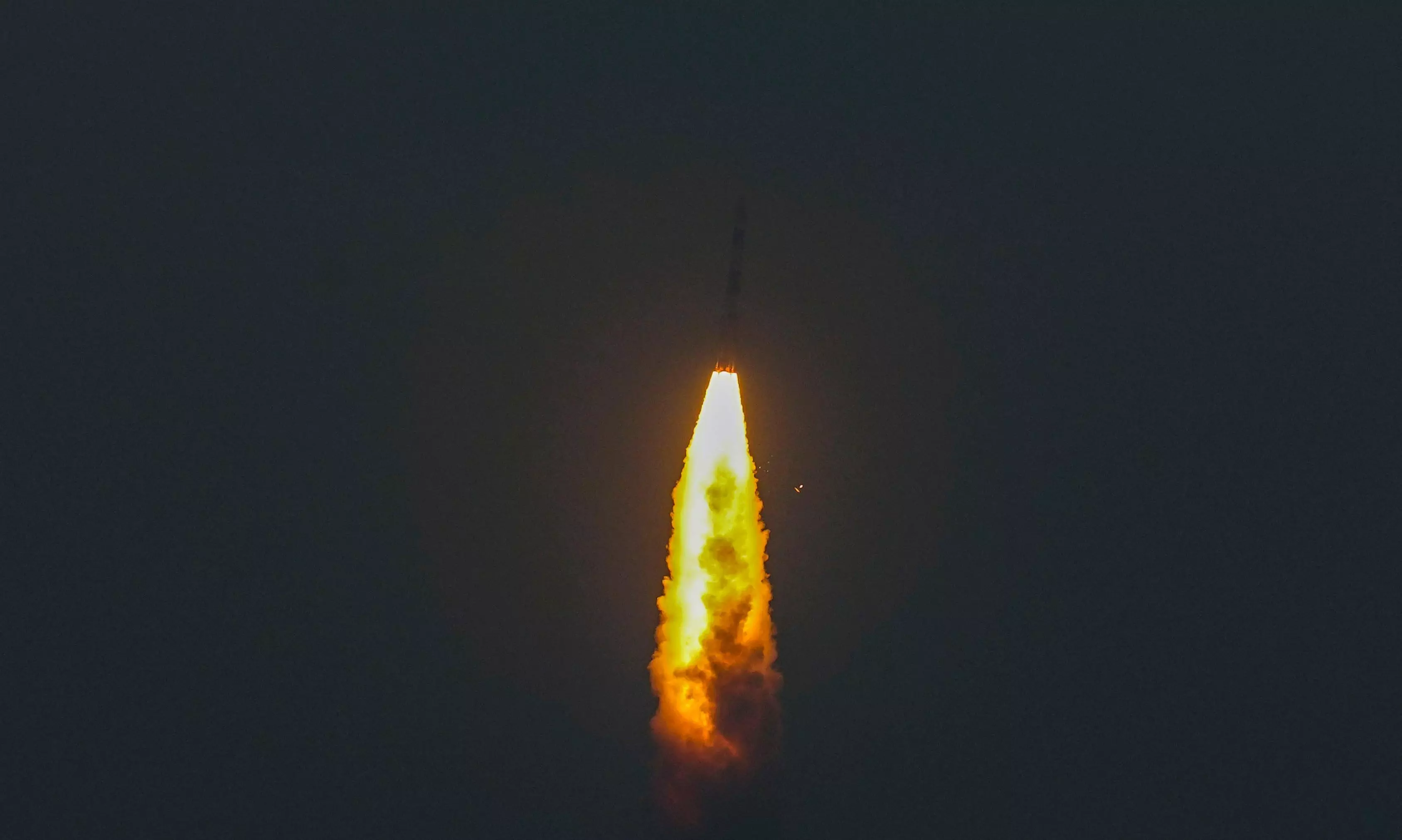PSLV Is a Proven Vehicle and It Will Come Back Stronger
Chamber pressure drops, spirit intact: what PSLV-C61 taught ISRO

Nellore: ISRO’s Polar Satellite Launch Vehicle (PSLV) is globally regarded as a reliable and battle-hardened workhorse. But the failure of PSLV-C61 — following a sudden chamber pressure drop in its third-stage solid rocket motor — had a sobering effect on Space scientists.
Space flights remain inherently complex, a senior scientist said on Monday.
Though the mission was lost, the event offers crucial insights into the intricacies of solid propulsion and underscores ISRO’s resilient scientific ethos. Solid rocket motors, like those in the PSLV, are valued for their simplicity and thrust efficiency.
However, they demand absolute internal integrity. Once ignited, these motors cannot be throttled or shut off. A sudden depressurisation mid-burn, as seen in PSLV-C61’s third stage, typically indicates an anomaly in the motor assembly.
An ISRO scientist said, “The third-stage chamber pressure dropped steeply after a nominal start — a signature pointing to structural or thermal protection failure. We are closely examining nozzle material behaviour, grain bonding quality, insulation performance, and casing strength.”
This is a setback, but also a vital opportunity to enhance our system margins.”
Globally, similar failures have occurred even in mature programmes. The European Vega-C’s Zefiro 40 motor failed in 2022 due to casing erosion. NASA’s Titan 34D-9 and Titan IV-K11 rockets suffered solid motor anomalies in the 1980s and 1990s, linked to grain flaws and insulation breaches.
Such cases often stem from minute imperfections that rapidly escalate under high-pressure combustion. Among the most common causes of pressure loss are grain cracks or voids, insulation burn-through, propellant-casing de-lamination, nozzle failure and flame instabilities that locally quench combustion.
Even a minor flaw can drastically alter internal flow dynamics, causing pressure collapse or structural failure within milliseconds.
Despite the failure, PSLV’s legacy remains intact. With over five decades of experience, ISRO has repeatedly demonstrated an institutional culture of learning from adversity. The Chandrayaan-2 lander’s 2019 anomaly, for instance, informed design changes that enabled Chandrayaan-3’s precision landing.
PSLV-C61’s failure is expected to lead to tighter controls in grain casting, bonding inspections, material testing and perhaps the integration of additional sensors for early anomaly detection.
The ISRO expert added, “Failures like these, when rigorously analysed, teach us that it happened with more than a dozen normal flights. Solid propulsion is a mature domain, but not without risks. Every data point helps us evolve. PSLV is a proven vehicle — and it will come back stronger.”
As ISRO moves forward with ambitious projects such as Gaganyaan and reusable launch systems, its ability to mine insights from failure remains a defining strength. Chamber pressure may have dropped in PSLV-C61’s third stage — but ISRO’s spirit, built on discipline and resolve, remains firmly on course, the scientist asserted.

